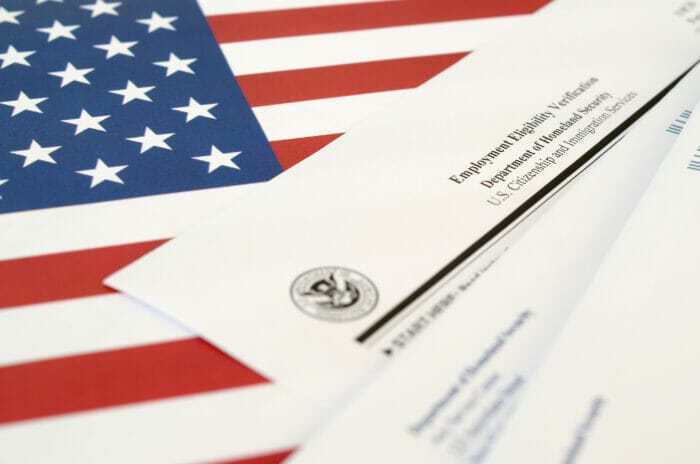
U.S. Citizenship and Immigration Services (USCIS) recently made minor updates to Form I-9 — the form used by employers to verify a new employee’s work authorization in the U.S. — as well as to the government’s E-Verify system. While the updates are small, it’s important for employers and their employees to understand what’s changing and how it might affect hiring paperwork.
What’s Changing on Form I-9?
Form I-9 is required for every new hire in the U.S., regardless of immigration status. The newest version of the form (dated 01/20/25) includes a few small updates:
- The checkbox in Section 1 that previously said “A noncitizen authorized to work” now reads “An alien authorized to work.”
- USCIS updated the wording for two List B documents (the documents that establish a person’s identity) to match legal standards.
- The form’s instructions now include updated privacy information from the Department of Homeland Security (DHS).
These changes don’t affect how employees complete the form or what documents they need to provide. They are simply updates to the wording to bring it in line with U.S. immigration law.
Which version of the form should I use?
You can use any of the following versions of Form I-9:
- Edition 01/20/25 (expires 05/31/2027) — the newest version
- Edition 08/01/23 (expires 05/31/2027) — still valid
- Edition 08/01/23 (expires 07/31/2026) — also valid, but employers must update electronic systems by July 31, 2026 to reflect the correct expiration date
What’s Changing in E-Verify?
E-Verify, the online system that allows employers to confirm an employee’s work eligibility, has also been updated to match the changes on Form I-9.
The citizenship status option “A noncitizen authorized to work” in E-Verify was changed to “An alien authorized to work.”
Here’s what that means:
- If an employee selects “An alien authorized to work” on the new Form I-9, employers will now see that same language in E-Verify.
- If an older form is used and the employee selects “A noncitizen authorized to work,” the employer still needs to select “An alien authorized to work” in E-Verify.
- The change also applies to employers using E-Verify through Web Services or E-Verify+, and the system will update the employee’s status automatically — even if the submission uses the old language.
What Employers Should Do Now
- Download the latest Form I-9 (01/20/25 edition) from USCIS and start using it, or continue using a valid earlier version until it expires.
- Update any internal systems to reflect the new expiration date if using the 08/01/23 version.
- When creating E-Verify cases, make sure to select “An alien authorized to work,” even if the form still shows the older language.
What Employees Should Know
If you’re starting a new job and completing Form I-9, don’t worry if you see different terms depending on the version of the form your employer uses. These changes are about aligning with legal definitions, not changing your eligibility or the hiring process.
These updates won’t affect most people’s day-to-day hiring experience — but staying current ensures your paperwork is compliant and avoids future delays. If you’re an employer using E-Verify, take a moment to double-check your systems and make sure your team knows about the updated language.